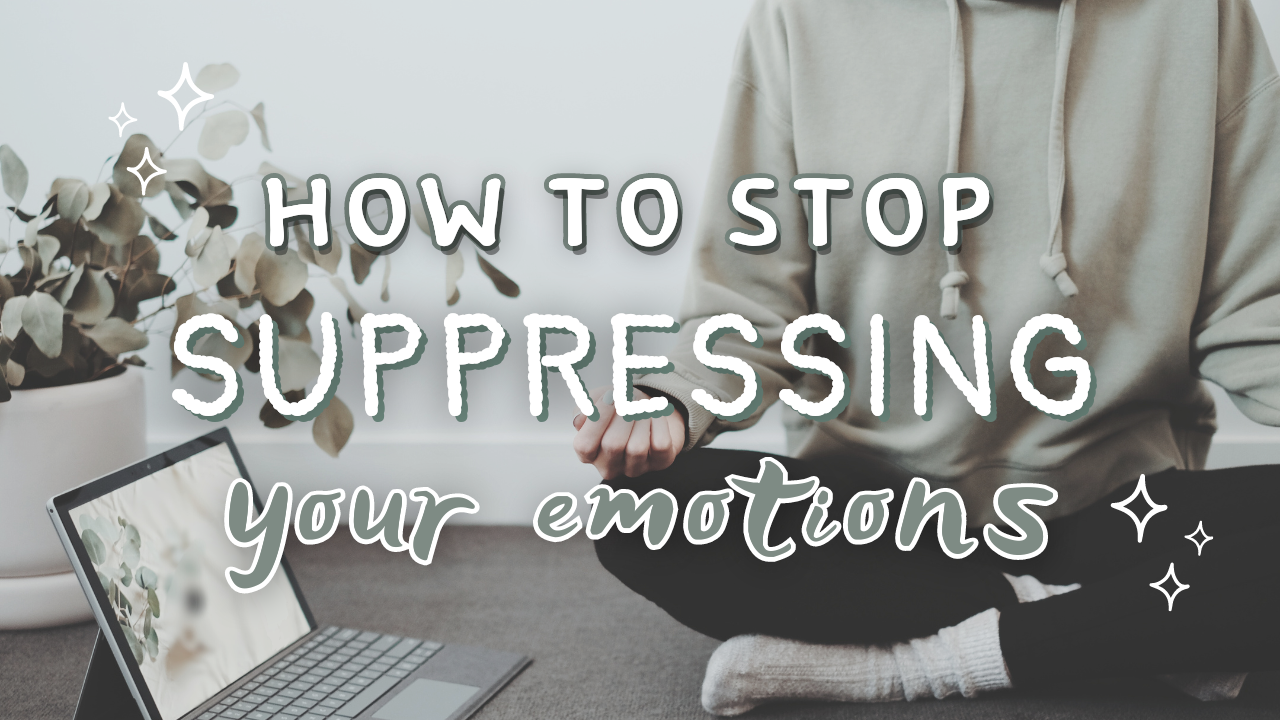Letting Go vs Suppression
When a negative thought arises, we can go down two different paths: we can think about it more or we can think about it less. One isn't necessarily better than the other; they both serve different functions.

When a negative thought arises, we can go down two different paths: we can think about it more or we can think about it less. One isn't necessarily better than the other; they both serve different functions. Both can lead to amazing improvements in your overall happiness, but they can both also lead to increased pain and negativity depending on how you approach them.
I'm going to explain why this might happen and how you can ensure that whichever route you take, you do so with an understanding of what can go wrong and how to avoid it.
Thinking Less
In part one we will be focusing on thinking less about our negative thoughts and emotions. The idea being, that if we think less about our negative thoughts and emotions we won't experience them as much... There is a healthy way to do this, known as letting go. However, this is not an easy thing to do without practice. Often, we think we are letting the thoughts go, but in reality, we are suppressing them, which is quite the opposite. Suppression is like shoving those thoughts into a box in your mind and trying to hold on tight to the lid. Eventually, those thoughts and feelings escape, sometimes in outbursts of emotion or in anxious rumination.
Suppression vs. Letting Go
Suppression can mask itself as letting go, and this is a pitfall many people fall into, including myself in the past. Suppression is when you experience intrusive thoughts, anxious thought loops, or overwhelming emotions, and you try to push them away, cover them up, avoid them, or resist them as much as possible, hoping they will eventually disappear. The problem is that your attempts at pushing these thoughts away actually create more resistance, and the pressure that builds up ends up exacerbating whatever was causing the negativity in the first place.
For instance, you might be having a bad day and have a negative intrusive thought like, "I hate work." Trying to suppress that thought and telling yourself that you shouldn't be feeling that way only creates resistance. These thoughts and feelings are likely to resurface later, perhaps during a one-on-one with your manager or afterward in an argument with your partner. Your patience might be reduced because your brain is still working to suppress those thoughts and feelings.
The Role of Resistance
Resistance is the feeling that something shouldn't be the way it is. The more you push a thought away, the more you tell your brain that the thought shouldn't be there, and the more at odds your beliefs are with reality. This creates cognitive dissonance, a state where our brains don't like it when our experience and our beliefs aren't aligned. If we keep thinking, "I'm not scared," but we can feel our heart rate increase and our stomach tied in knots, our brain isn't going to trust us, and it will make those feelings worse.
Acceptance as a Solution
The opposite of resistance is acceptance. Acceptance is the act of acknowledging a thought is there. Once you accept it, it's a lot easier to let it go. For example, if you tell yourself, "I am feeling scared right now, and that is understandable and okay," acceptance creates an immediate calming effect. Your brain sees that your thoughts align with your experience, thus reducing cognitive dissonance or resistance.
Practical Steps to Let Go
Letting thoughts go is about choosing not to cling to them. Sometimes, a part of us wants to feel pain because it allows us to tap out from responsibilities or get comfort from others. It’s important to acknowledge this part of our brain and let that go too. If you struggle to tell the difference between suppressing a thought or letting it go, note that suppressing your thoughts feels like holding your breath, while letting them go feels like you can finally breathe again.
Here are some questions to ask yourself to determine if you might be suppressing thoughts:
- Does this feel like a relief or pressure building up?
- Does it feel like the thought is leaving your mind completely or being stored in a separate part of your mind?
- Do you find it easier or harder to breathe when you think about letting this thought go?
- Is this coming from a place of acceptance or annoyance/resistance?
- Do you find yourself saying, "I want to let this go," or "I should let this go" or "I have to let this go"?
The next time you feel yourself holding on to a negative thought or feeling, notice it, accept it, and then practice letting it go.
Watch Part Two: Thinking More
In the second part of this discussion, I will explore the opposite end of the spectrum: why we might choose to think more about negative thoughts and feelings and how it can improve our lives.

